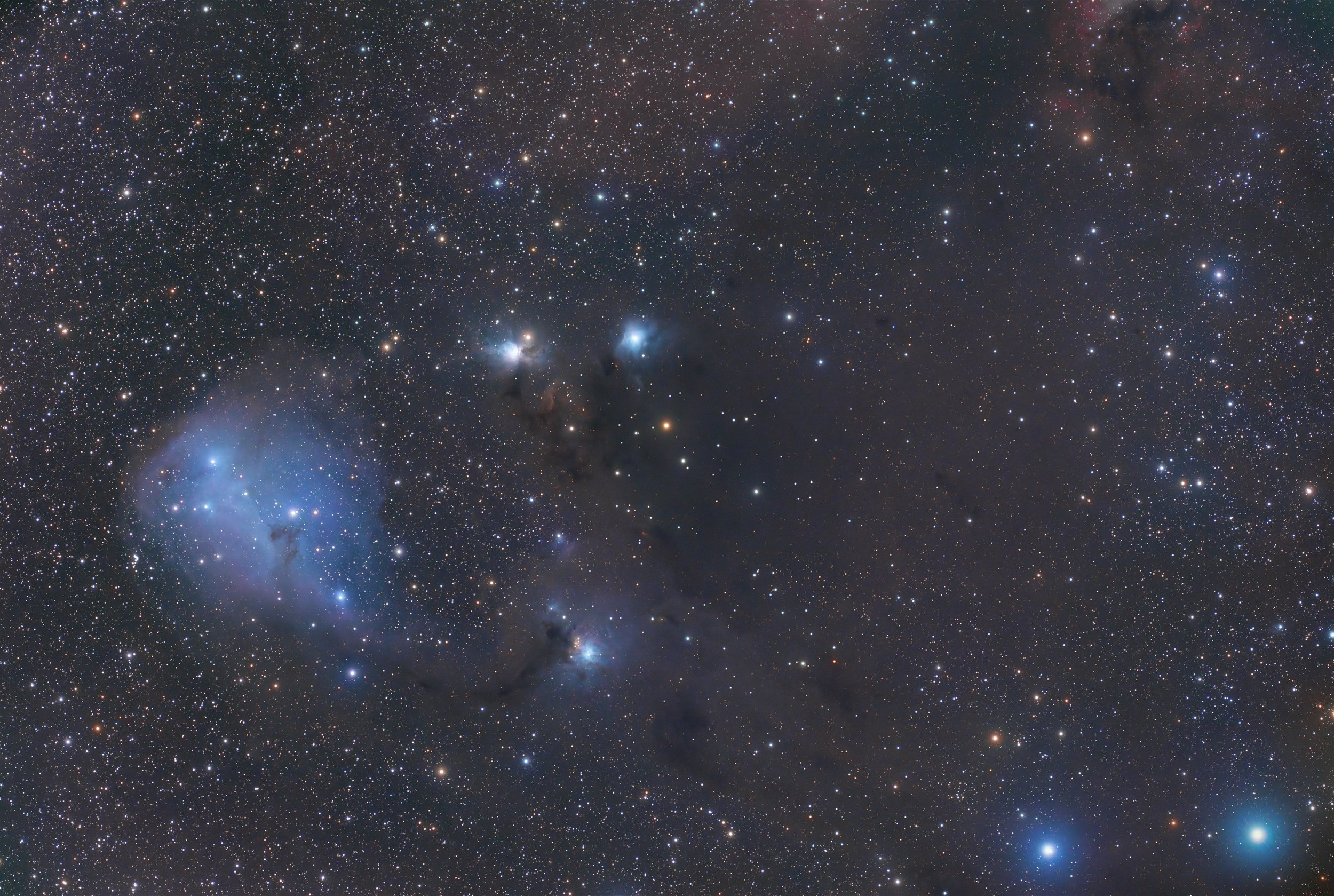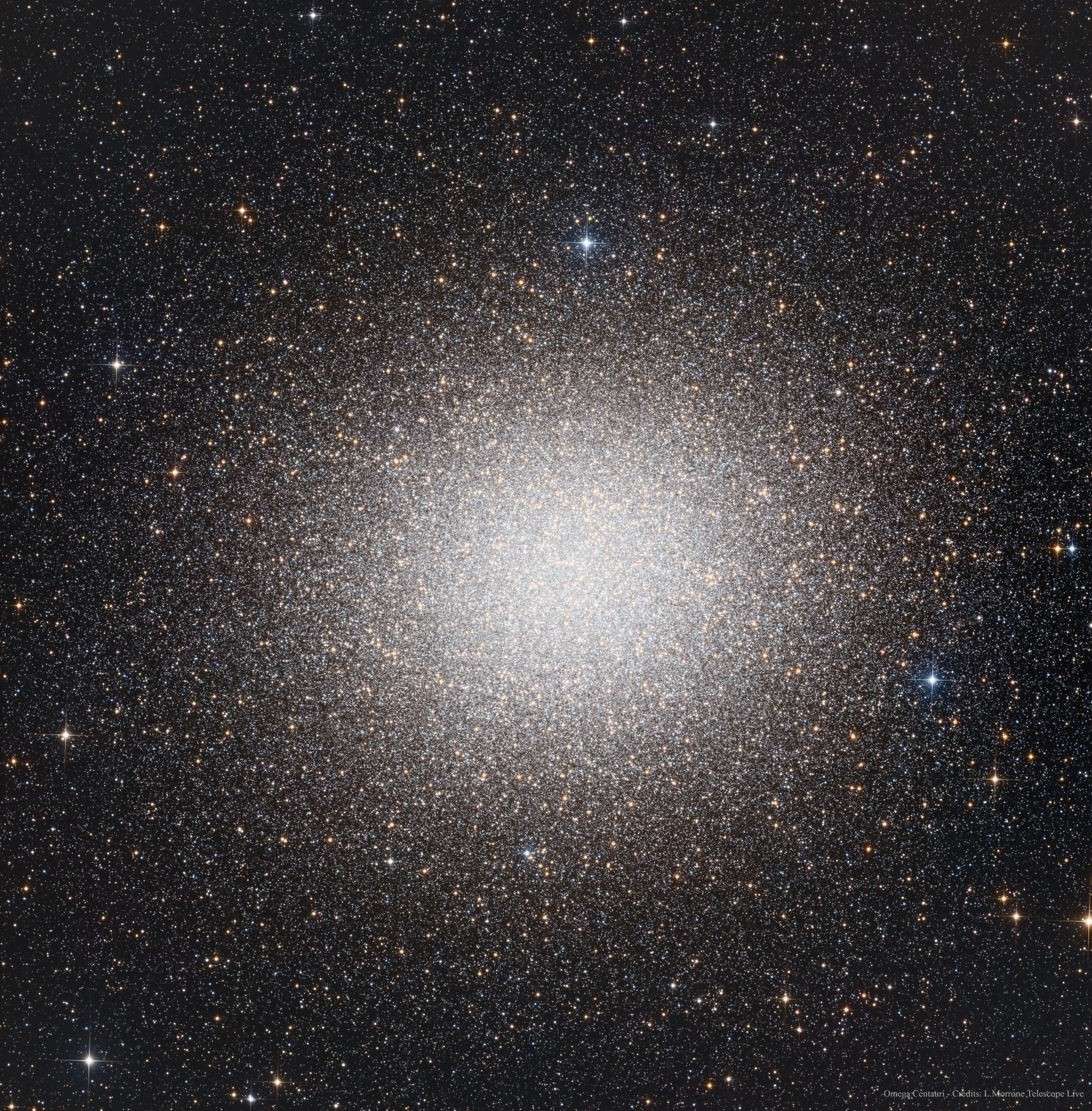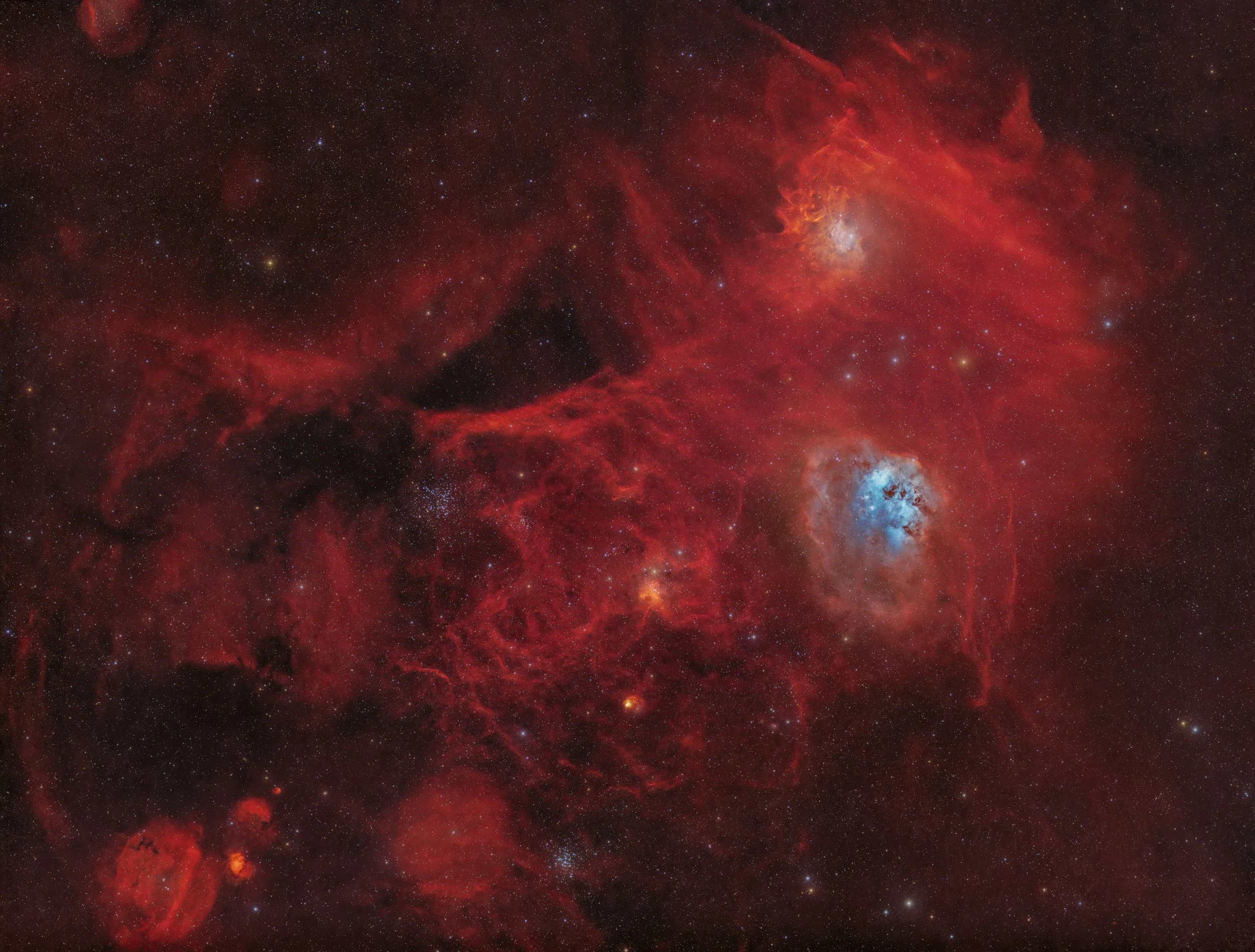
AAPOD2 Image Archives
Omega Centauri
Omega Centauri (NGC 5139) is the largest and brightest globular cluster visible from Earth, lying approximately 17,000 light-years away in the constellation Centaurus. Spanning more than 150 light-years in diameter, it contains an estimated 10 million stars—many of which are ancient, dating back over 12 billion years. Its sheer size, mass, and stellar diversity set it apart from typical globular clusters, suggesting it may be the remnant core of a dwarf galaxy long ago absorbed by the Milky Way.
This densely packed stellar sphere dazzles in long-exposure images, revealing its layered population of red giants, blue stragglers, and faint white dwarfs. Its dense core is a prime subject of study for astronomers seeking clues about early galactic formation. Observing Omega Centauri from the dark skies of Río Hurtado offers a breathtaking glimpse into a relic of the early universe still orbiting silently in our galactic halo.
NGC 4631 - Whale Galaxy
NGC 4631, often called the Whale Galaxy due to its elongated, fish-like profile, is a stunning edge-on spiral galaxy located about 25 million light-years away in the constellation Canes Venatici. Spanning roughly 140,000 light-years, it's slightly larger than our Milky Way and teems with star-forming regions that radiate brightly in ultraviolet and hydrogen emissions. Its thick, warped disk and bright central bulge create the illusion of a breaching whale gliding through the cosmos.
This galaxy is also notable for its strong halo of hot gas visible in X-ray and radio wavelengths—a signature of vigorous star formation and stellar winds pushing material far above the galactic plane. NGC 4631 is gravitationally interacting with its nearby companion, NGC 4627, a dwarf elliptical galaxy, which may be partially responsible for its distorted shape and turbulent starburst activity. Together, they form an intriguing and photogenic duo in the deep sky.
First Quarter Mineral Moon
This striking image captures the Moon at its first quarter phase, enhanced with a mineral color treatment to reveal subtle variations in surface composition. The blue and brown hues represent differences in the Moon’s geological makeup—blues indicating titanium-rich areas and browns marking regions with lower titanium and higher iron content. Craters and mare basins come to life with added depth and contrast, offering a fresh perspective on our familiar satellite.
Photographed from Shropshire, England, this mineral Moon image showcases how modern processing techniques can turn a classic lunar phase into a visually stunning and scientifically rich portrait.
Auriga's Heartbeat: Nebulae and an Ancient Cluster
his vibrant wide-field image captures two prominent emission nebulae in the constellation Auriga: the Flaming Star Nebula (IC 405) and the Tadpole Nebula (IC 410). IC 405 glows with the intense light of the hot star AE Aurigae, which energizes surrounding hydrogen gas, creating a fiery appearance. Nearby, IC 410 houses the "tadpoles"—dense, dusty structures sculpted by stellar winds from the young cluster NGC 1893.
The image combines over 20 hours of integration using both narrowband and broadband filters. The result is a richly detailed view blending structure, color, and contrast—highlighting the dynamic interplay of ionized gases and star formation within these celestial clouds.





